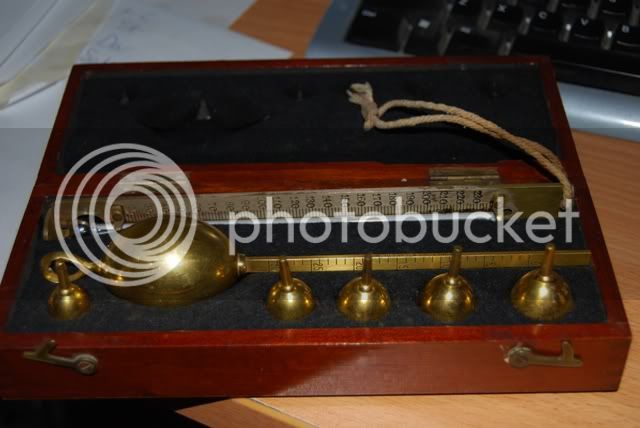peas_and_corn
I'm sorry Dave, I'm afraid I cannot mash that
I'd say my barrel fermenter (now used for storing starsan) and my Coopers plastic spoon, which has somehow survived this long- though I don't really use it any more. Both are 8 years old.

Dring & Page "Improved Saccharometer" circa 1850's. Measures in pounds of extract per beer barrel (there's a conversion for that).
Dring & Fage "Improved Saccharometer" circa 1850's. Measures in pounds of extract per beer barrel (there's a conversion for that).
Dring & Fage "Improved Saccharometer" circa 1850's. Measures in pounds of extract per beer barrel (there's a conversion for that).
Dring & Fage "Improved Saccharometer" circa 1850's. Measures in pounds of extract per beer barrel (there's a conversion for that).
Dring & Fage "Improved Saccharometer" circa 1850's. Measures in pounds of extract per beer barrel (there's a conversion for that).
This is my oldest bit of kit, it's almost as old as me
I inherited this from my Grandfather. He obviously didn't do big beers, as it only reads up to 1050.
It was purchased in 1969 for the princely sum of $1.73
View attachment 42190
So what is your oldest bit of kit?

Bates Saccharometer circa 1900. When I bought it I did intend to use it but.......
Just part of my collection now, mainly Sikes' Hydrometers from late 19th C

As a not quite yet conservator and as someone who works with old cultural artefacts on a daily basis I'd like to say yum. I inferred from what you wrote that you now have a collection of similar items?
Enter your email address to join: